I adapted this shadertoy into a Unity shader and have noticed that, while it generally works as expected, there are certain artifacts that appear, as I will further explain. I believe they are related to the calculation of roots in the Bezier curves.
Below is a visualization of the artifact. First picture shows the Bezier shape with artifact, second picture shows the Bezier shape in earlier animation frames, working correctly:


I seemed to have narrowed down the origin of the artifact to the function that calculates the Bezier roots. When I only visualize the shape outline, there are no artifacts. Artifacts are introduced when applying the method that fills in the shape using the even-odd intersection test.
The Bezier shape is animated: In other words, the Vector2 positions that define the control points of the Bezier curve change over time (they linearly interpolate between two defined positions). At most frames behavior is expected, however, at certain frames (or positions) the artifacts appear.
The fill-rule basically counts intersections between the Bezier curve and horizontal lines at each uv.y coordinate, where a given horizontal line acts as the x-axis for the Bezier function and the roots of the function represents points that intersect with this x-axis. However, some of the roots will be complex numbers (i.e. they have a real and imaginary component, a + bi), which I think might cause the issue. However, the function that calculates the roots (starting at line 74) evidently discards complex roots, because I read the annotations where they link their sources and one of the sources is clearly where the shadertoy author got this function from: the cited article describes how this function discards complex roots. See "Implementing Cardano's algorithm for finding all real roots" about 1/4 the way down.
I am scratching my head. Does anyone reading have experience with Bezier functions? Ever seen artifacts like this? Would really appreciate any insight.
Thanks!
I have already tried addressing "near misses" and double-counting of segments at segments' beginning and ending, since this is where segments may overlap (e.g. the point that defines the end of one Bezier segment is the exact same position that defines the beginning of the next segment). This did not solve the problem.